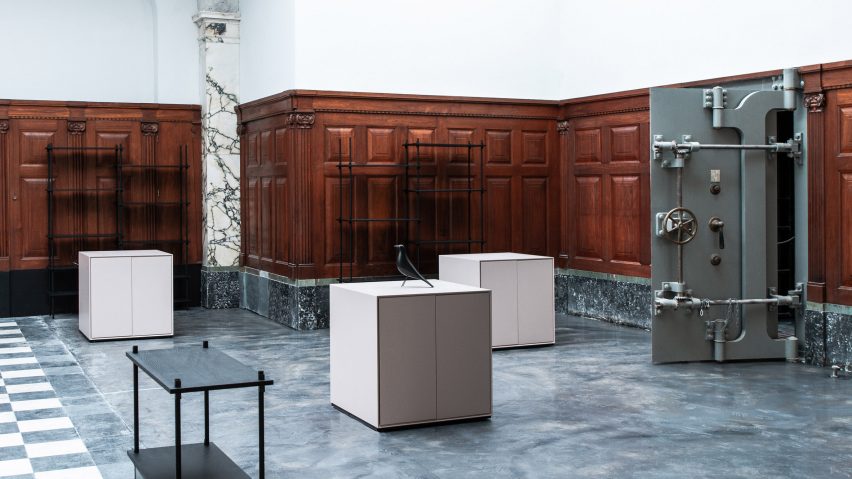
Paustian transforms 19th-century bank into Copenhagen showroom
Ornate gold columns and chequered marble floors nod to the past life of Danish furniture brand Paustian's latest showroom, which has opened in a building renovated by Aarstiderne Arkitekte.
The Paustian showroom takes over a now-defunct bank that dates back to 1868. It has been designed by the brand's in-house design team in collaboration with Danish architecture practice Aarstiderne Arkitekter to celebrate its decadent historic features.
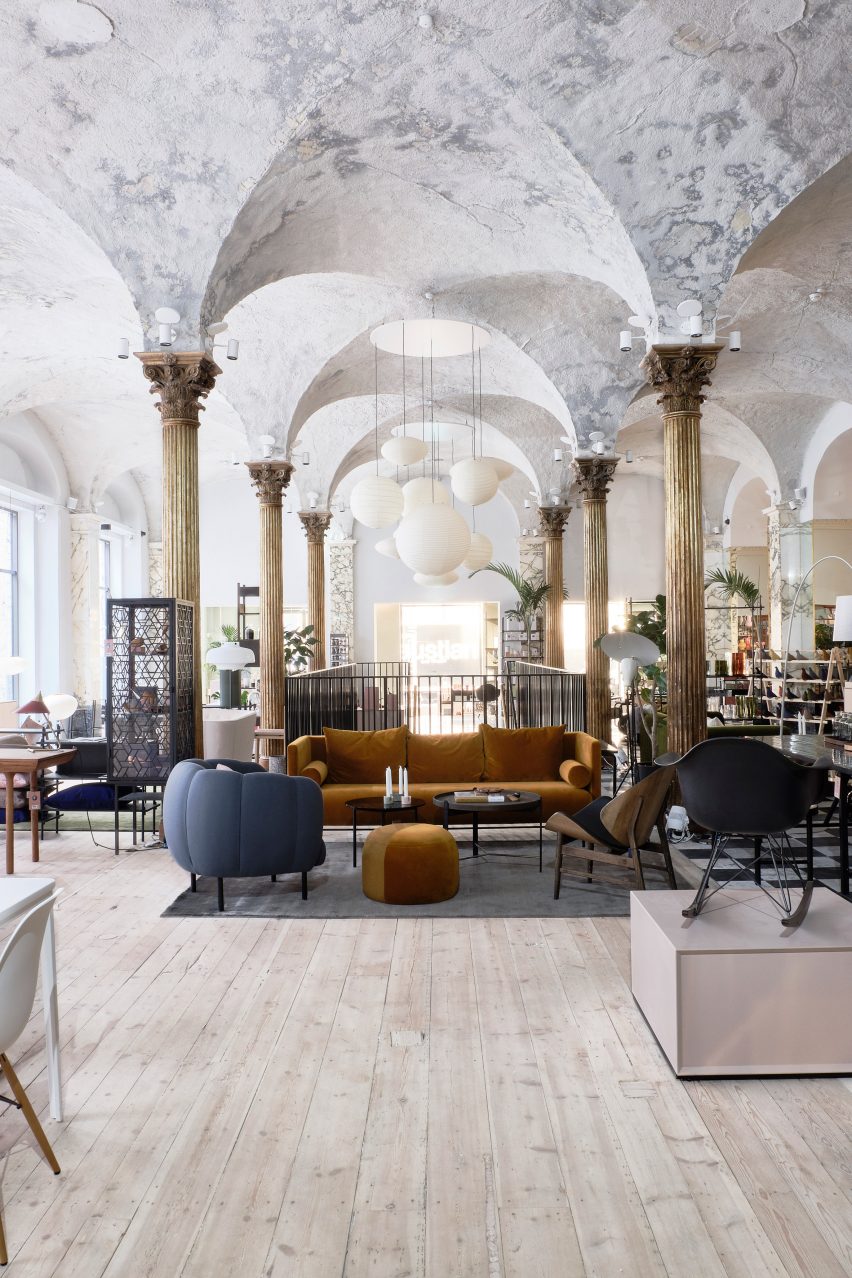
Located in Strøget, a pedestrianised shopping area at the heart of Copenhagen, the store comes as part of the brand's move to be more accessible.
It joins three other showrooms dotted across Denmark: one in Østbanen, which occupies an old train station, another in Aarhus which is located inside an 18th-century mansion, and the flagship in Nordhavn, which is set within a building designed by Danish architect Jørn Utzon.
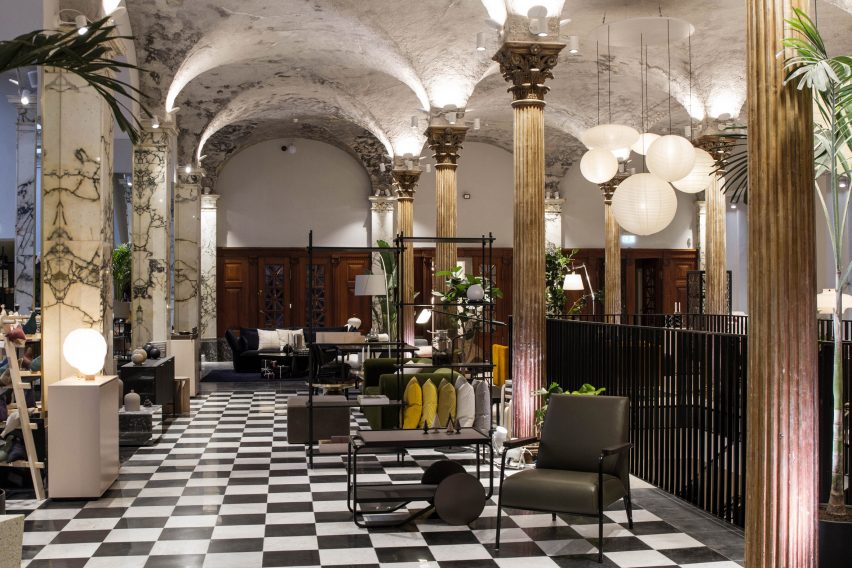
"With Paustian Strøget we wanted to create an inspiring design universe closer to the customer," explained Frantz Longhi, CEO of Paustian.
"The store in the 1987 Utzon building in Nordhavn is a design destination and tourist attraction because of the architecture and the curated mix of iconic design and furniture we show there, but it is a bit outside of the centre of Copenhagen," he told Dezeen.
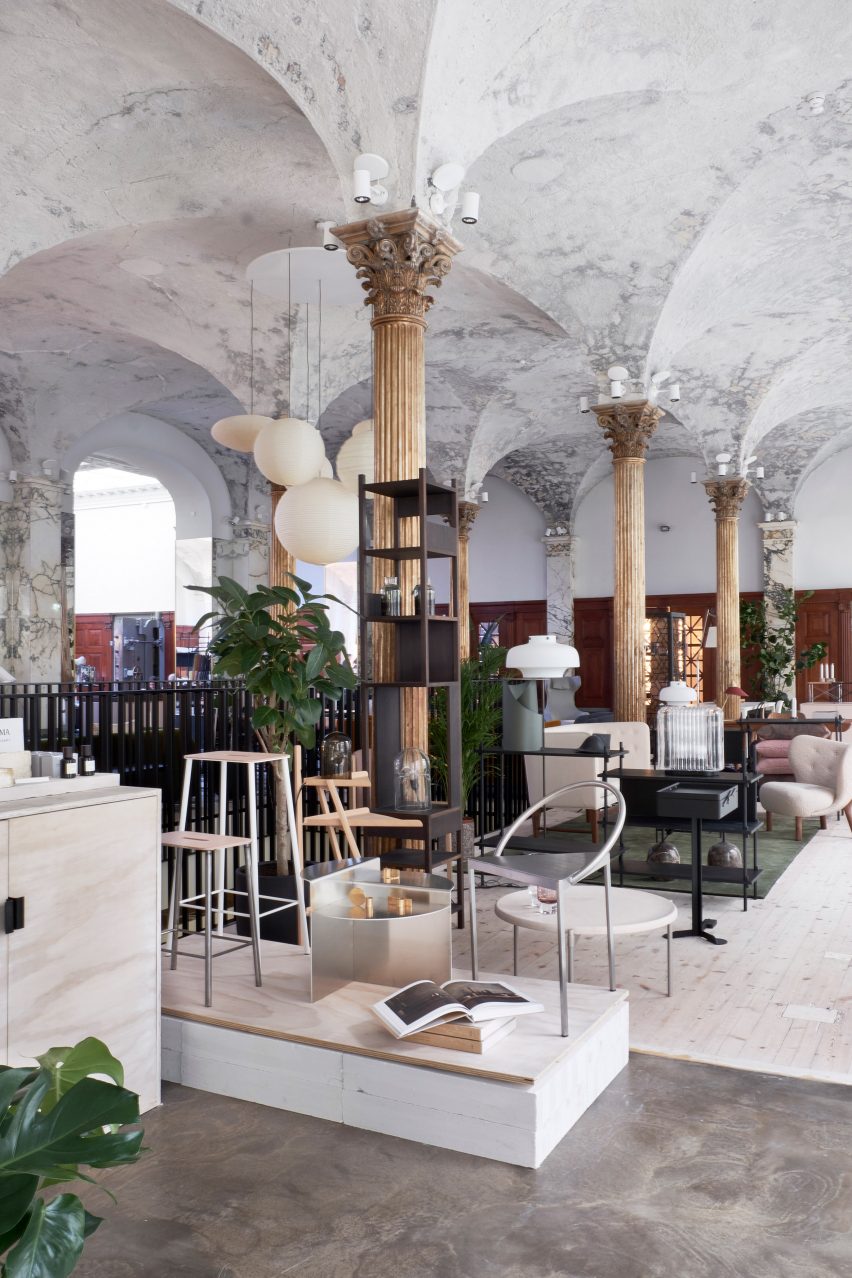
The new central branch features an expansive ground floor punctuated by the bank's original gold pillars, which rise up to a mottled, vaulted ceiling. Veiny marble structural pillars, mahogany wall panelling and the distinctive chequerboard flooring have also been preserved throughout.
Keeping major interventions to a minimum, the practice has inserted large panels of glazing in the store's front facade to flood the space with natural light and allow passersby on the street to glimpse inside.
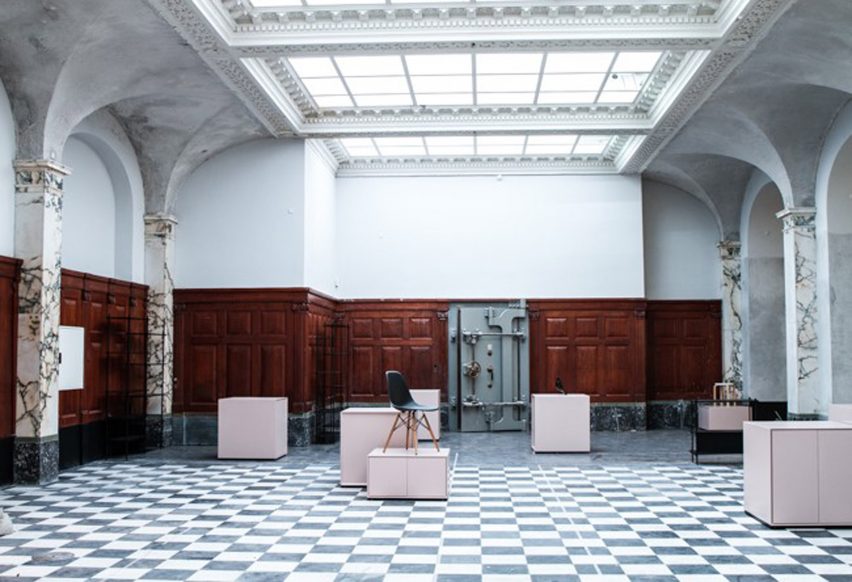
"Throughout the entire process, our aim has been to preserve the original architecture, while still revitalizing the building with new functions," said the practice.
"The main architectural thrust has been to open the property towards the city."
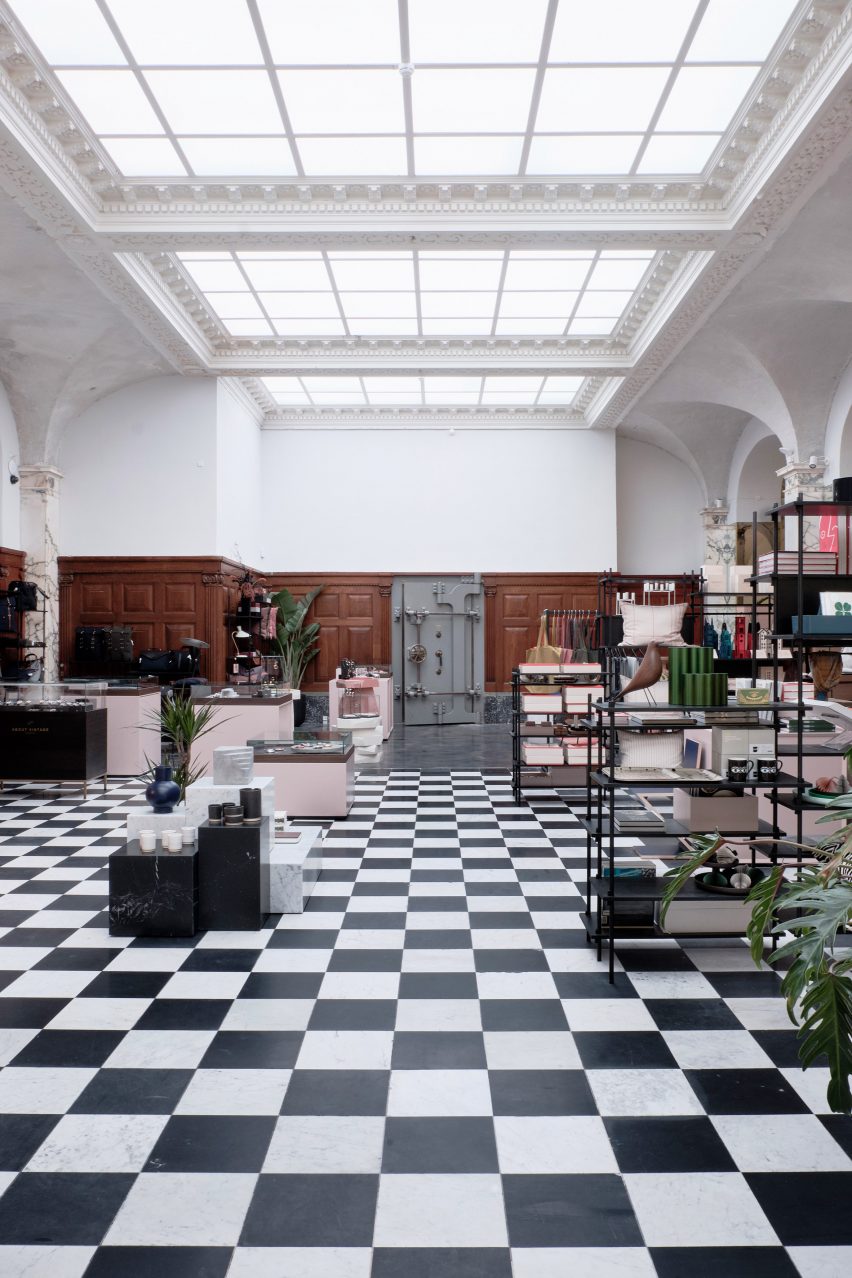
One half of the ground floor boasts living or dining room-style setups that showcase Paustian's furniture.
The other half has a retail space that the brand hopes will "address customers that are interested in design on a broader scale".
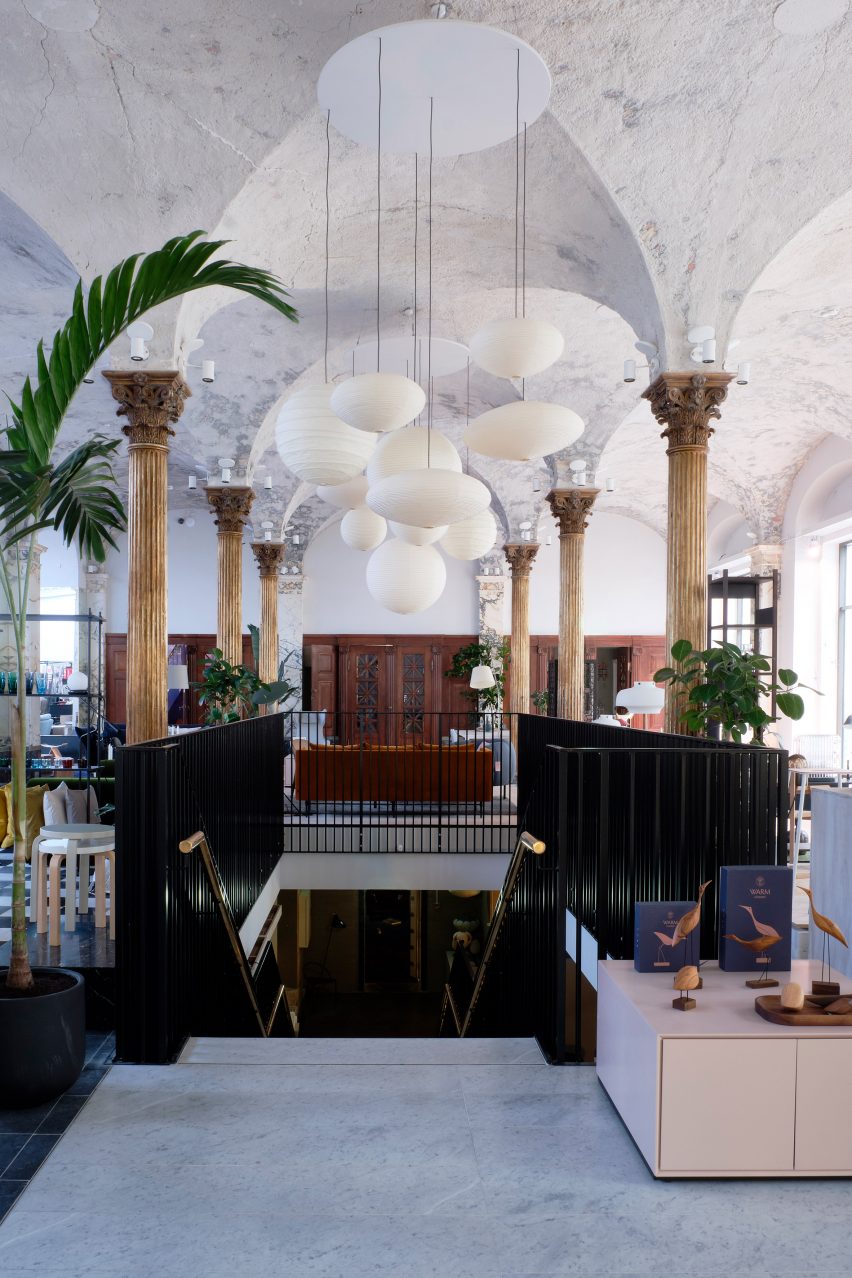
It offers a mix of home accessories like ceramic pots and coffee-table books and fashion pieces like bags and jewellery sourced from a mix of emerging and established designers. All are displayed on tall shelving units or pale pink plinths, a shade that Paustian regards as one of its signature colours.
Certain pieces like armchairs or pendant lamps are showcased inside the bank's old vaults, which are still tucked away behind heavy metal doors.
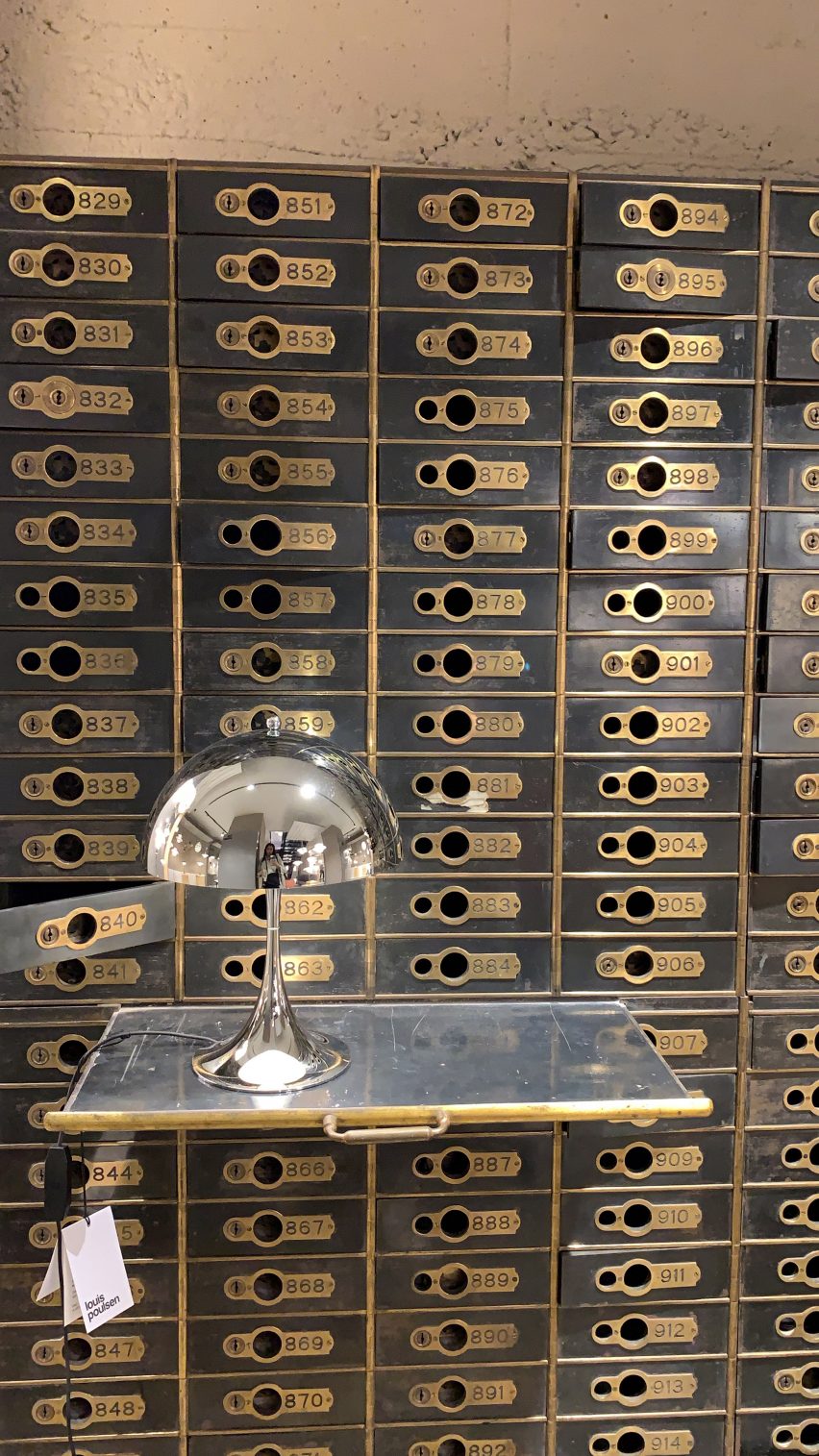
A black wire-frame staircase leads down to the basement, where the brand is currently displaying its lighting collection. Products are placed amongst the bank's old safety deposit boxes, formerly used to hold clients' valuable possessions like property deeds or gemstones.
Larger lighting pieces are presented at this level inside other disused vaults, which customers access via winding sets of narrow stairs.
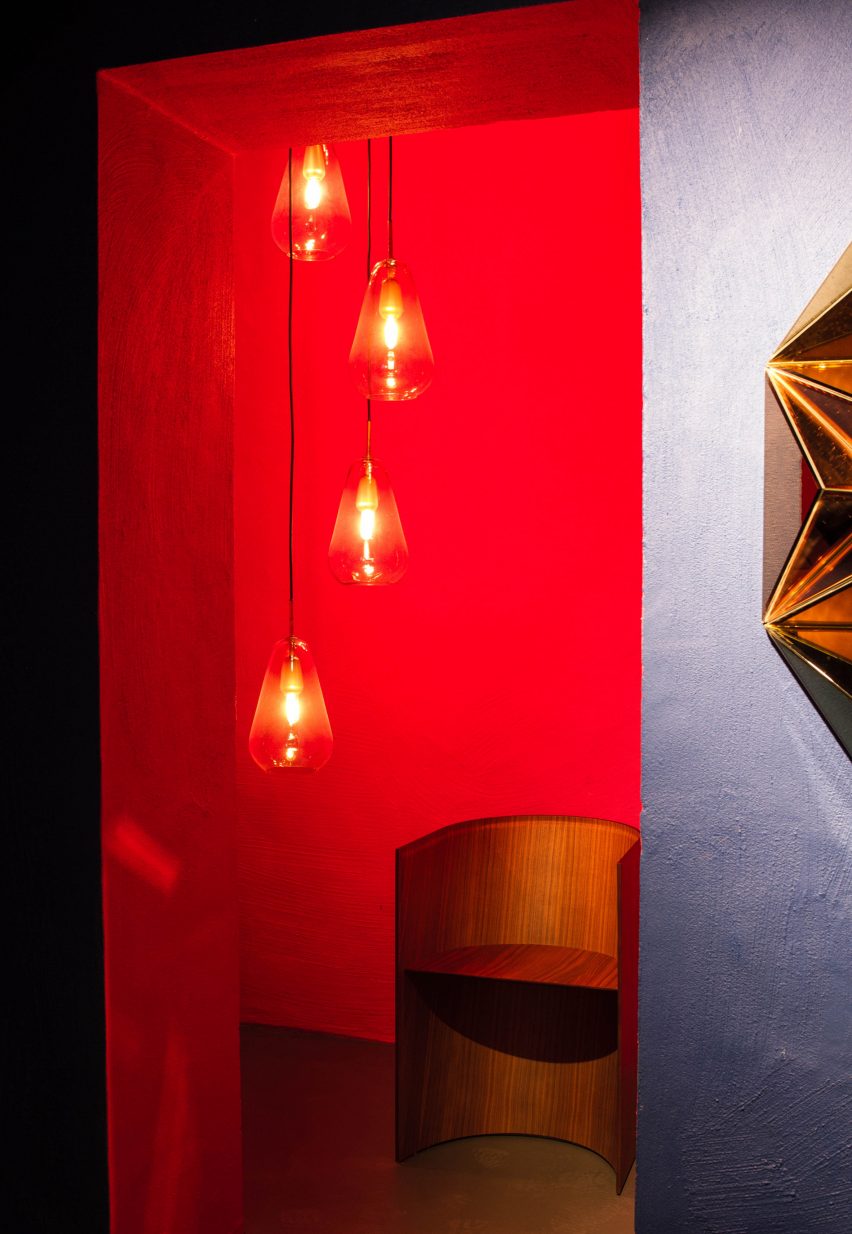
Paustian was founded in 1964 by Ole Paustian, who first set up a small store in Copenhagen's Vesterbro district.
It joins a handful of other Danish brands that have created new spaces to showcase their products – Menu recently collaborated with Norm Architects to create The Audo, a cosy hotel that doubles up as a huge showroom for the brand's furniture and homeware.